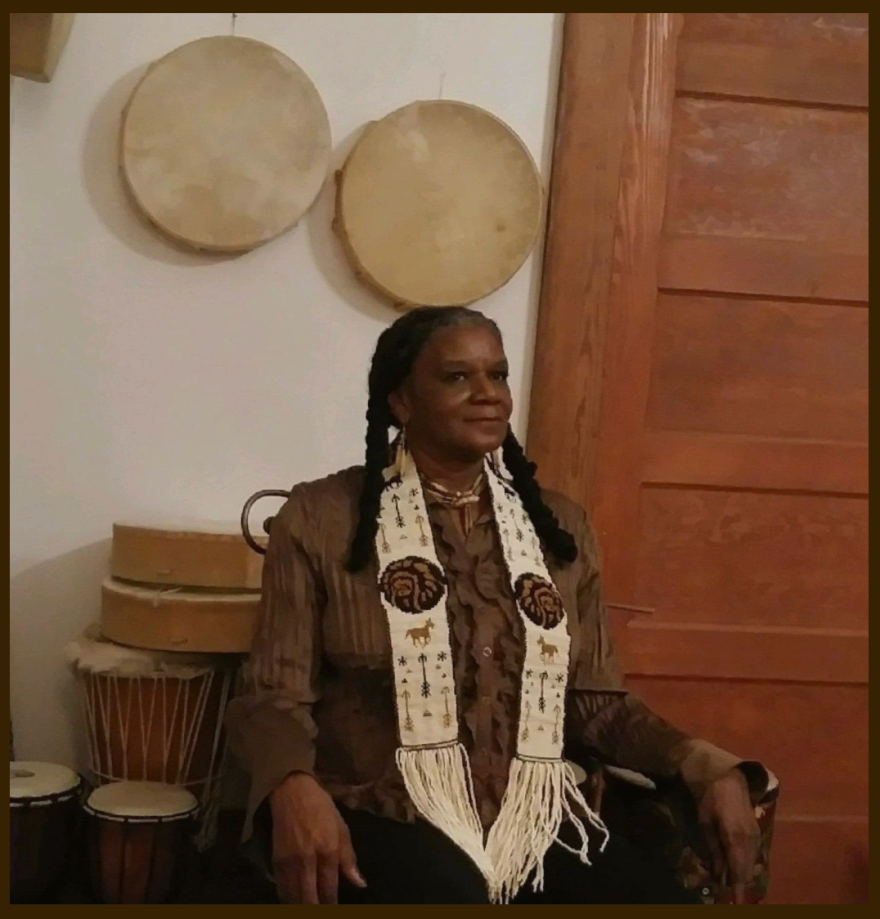In the first issue of the African American Folklorist printed and distributed the Black History month of 2020, I wrote an article called, “The Copper-Colored Races - Why aren’t Black Indians Part of Black History Month.” The thesis was, with the importance of the celebration founded by Carter G. Woodson, it seemed the same cast of characters were always being celebrated in recent decades, considering there is a group of black folk, that truly would be considered Black American, or even American Black that is rarely mentioned in the celebration of Black History Month. They are called “The Copper Colored People.”
Chief Elwin Warhorse, Queen of Tchefuncta Nation, and the Chief of the Chahta Tribe says, “We are excluded from the Democratic, Republic, independent parties, whatever party. You don't hear anybody say anything about the original indigenous copper color people! they talk in black and white!”
So who are the Copper-Colored races and how is it relevant to African Americans? According to the American Dictionary of English, the “Native American,” also called “Indians” were as described - “AMER'ICAN", noun A native of America; originally applied to the aboriginals, or copper-colored races, found here by the Europeans; but now applied to the descendants of Europeans born in America.”
The latter part of that definition is telling, however, we’re discussing the copper-colored people. To be direct, the term “Copper-colored” people is equivalent to “negro” people.
Phoenix Moon is a Colonial America historian, forensic genealogist, Civil Rights activist, and Grassroots Political legist. She said miseducation, propaganda, and the disconnection of generational family history play a part.
“Roots have been embedded in people's minds. But the truth about roots was never exposed properly, such as Alex Haley being charged with plagiarism. Several times. And he stole that story. That was an us story. But it wasn't his story. And it certainly wasn't the story for all so-called African Americans here.” She goes on to say the displaced feelings yearning for belonging primarily affect Black Americans, considering the substantial gap between the original viewing of the made for television program ‘Roots', many experience racism, and are often told they belong somewhere else.

History and traditions seem to tell a different story. Chief Warhorse shares that when Europeans, French, and Spaniards arrived on the American shores, they saw black Indians trading, though they described them as red copper-colored. It’s even documented that early voyagers who came to America journaled that they encountered Ethiopians or people who look to be. Does that mean they interacted with Africans? Michael Gomez, Professor of History and Middle Eastern & Islamic Studies and Founder, Association for the Study of the Worldwide African Diaspora, says in his book Reversing Sail, that the term Ethiopian was at times applied by the Greeks to Arabs, Indians, and others of dark hue, and is often used inaccurately to refer to Nubians.
Carlos Cuervo Marquez, an ethnologist, botanist, military general, and historian said, “the Negro type is seen in the most ancient Mexican sculpture. The Negroes figure frequently in the most remote traditions of some American Pueblos. It is to this race doubtlessly belongs the most ancient skeletons. Distinct from the red American race, which has been found in various places from bolivia to Mexico. It is likely that we repeat, America was a negro continent."
Phoenix Moon shares htat, "you may hear people having these really deep discussions on Ancient Egypt, ancient Greek, different civilizations, things that may have occurred 10,000 years ago, even the Cenozoic period 60 million years ago, right. But if you ask them who their third great grandparents are, and you can guarantee that the most Ph.D. person can draw a blank.”
The many African Americans that have taken to Ancestry.com weren’t just looking to connect to African tribes. They were also checking, researching, and verifying their connection as American Indians. William Katz, author of Black Indians: A Hidden Heritage and Patrick Minges, who presented transcribed interviews collected during the WPA slave narratives during the years 1936-1938, believe that Africans and natives Americans mixed, pro-created, and produced half African, half Indian people.
Waltho Wallace Wesley, a descendant from the Muscogee Creek and Seminole nations, a lifelong resident of Indian territory in present-day Oklahoma, and Indian historian states, "they were removing Indians from the East Coast and south and sending them here to Oklahoma. The deal was, you can go to Oklahoma, and we’ll leave you alone, we’ll actually provide protection so nobody can come and bother you. Y’all can be Indians all you want to. But you got to turn over your land. Or you can stay here on your land. We just gonna reclassify you how we feel. So now those Indians who decided to stay on their land were reclassified as negros.”

This propagated the Indian Removal Act and Reclassification, though other tactics were employed. The lynchings of the Jim Crow south enforced the reclassification from Indians to “Black Americans”. Waltho says it became illegal to be Indian. “When they were hanging all them folks down south in those trees? A lot of the folks were hanging in trees because they wouldn't forget they were Choctaw, and Chickasaw, Cherokees, and Creek,” said Wesley.
Martin Luther King Jr. said the negro is exiled in his own land during his infamous I have a dream speech. His speech is often quoted, but possibly, that specific statement was not fully received.






![A piece from Inner[re]visions](https://npr.brightspotcdn.com/dims4/default/acb7e0d/2147483647/strip/true/crop/2366x1318+0+1030/resize/280x156!/quality/90/?url=http%3A%2F%2Fnpr-brightspot.s3.amazonaws.com%2Fd1%2Fb1%2F739b15cc4c52b51d749384d58232%2Febony-marshman-blue-like-sit-there-and-count-your-fingers-or-sky-blue-atlc.jpg)
